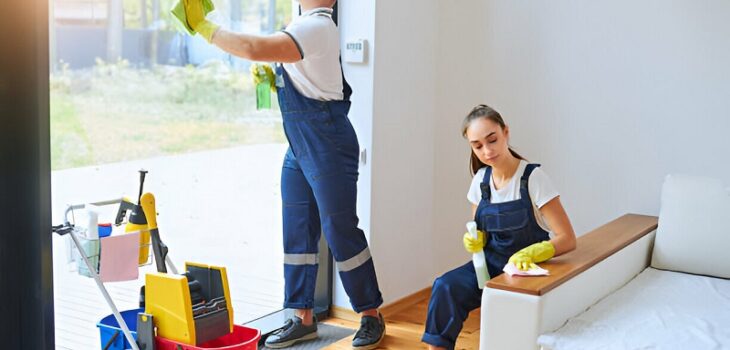 Business
Business
Decoding the Mysteries of End of Lease Cleaning: A Complete Breakdown
Ever wondered why some tenants leave sparkling clean properties while others retreat, leaving a mess behind? Do you anxiously stress about the clean-up process nearing your tenancy’s end? Or perhaps, you’re a first-time leaser, uncertain about your cleaning obligations. This post, your ultimate guide to end of lease cleaning, is here to dissolve your doubts. It’s time to navigate through this often daunting and misunderstood area of living on lease.
Understanding your responsibility as a tenant can help avoid disputes with your landlord and make the transition period smoother. In this guide, we will tear down the complexities surrounding end of lease cleaning, helping you plan your move-out time effectively. So, let’s together discover the cleaning codes to follow and then wave a hassle-free goodbye to your rented space.
Remember, a spotless end to your lease may also mean a beautiful beginning to your bond money recovery. So, are you ready to dive in? Let’s get started!
Why Should You Do End of Lease Cleaning?
Any tenant would want to leave a property with dignity and respect, upholding ethical standards of living. Indeed, it is about securing your bond refund, but it’s also about maintaining amicable relations with your landlord, solidifying your rental history, and making way for the next tenant. The hard work you put in cleaning truly echoes your responsibility and respect towards the property that was once your home.
What Does End of Lease Cleaning Involve?
Cleaning is not just about dusting and sweeping. It’s a meticulous task, involving the property’s every nook and cranny. From washing windows to deep-cleaning carpets, descaling bathrooms to degreasing ovens–end of lease cleaning is an exhaustive checklist. Choosing to hire professional cleaners or do it yourself depends on your comfort, skills, and time availability.
When Should You Start Your End of Lease Cleaning?
This is a subjective matter and entirely depends on the size of your property and the extent of cleaning required. Begin early, perhaps a week or two before moving out. Starting early would allow adequate time to rectify any missed spots or tackle unplanned disruptions, thereby assuring no compromises on the cleaning quality.
Who Is Responsible for End of Lease Cleaning?
In most cases, the onus of comprehensive end of lease cleaning falls on the tenant. However, landlords might take over if the tenancy agreement specifies so, or if some minor cleaning tasks do not warrant professional intervention.
The Pros and Cons of DIY End of Lease Cleaning
The advantages of DIY cleaning are cost-effective and give you control over your time. However, it can be taxing and less efficient if you lack professional cleaning techniques or effective tools.
The Pros and Cons of Professional End of Lease Cleaning
Professional cleaners bring with them expertise, efficiency, and advanced cleaning tools. They offer you peace of mind regarding your bond return. On the con side, the significant cost factor can deter many from hiring professionals.
Concluding Thoughts: The Clean Exit Strategy
End of lease cleaning can initially seem like an uphill task, especially if you are juggling between numerous moving-out responsibilities. However, planning, early start, and division of labour can make the process manageable. Whether you opt for DIY or hire professionals, the ultimate aim should be a pristine property, reflective of your tenancy time.
Always bear in mind that as a tenant, your responsibility doesn’t end with packing your belongings. It extends to reverting your once called home to its original, clean state. So, by ensuring your property’s complete clean-up, you not only ensure your bond return, but also leave with your head held high–making a positive end note to your rental chapter.
For more information available at https://simplychiclife.com/









